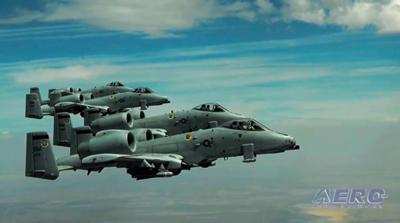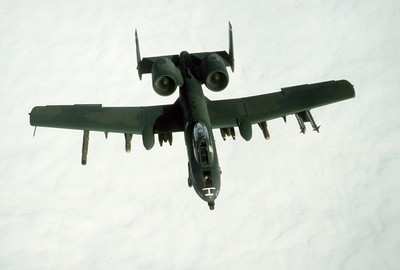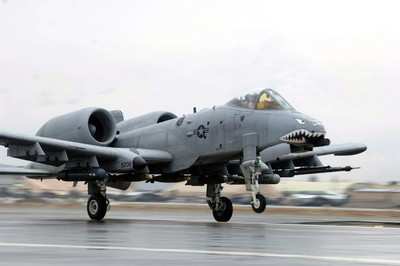War-Pigs and Hog-Heaven
Already about the dubious endeavor of retiring the remainder of America’s A-10 Thunderbolt II fleet, the U.S. Air Force has set forth it intends to eliminate nearly half its elite Tactical Air Control Party over the coming three years.

The Tactical Air Control Party (TACP) is a small but vital team of military personnel tasked with coordinating air and ground forces during Close-Air-Support (CAS) operations. Given their druthers, USAF generals will shrink the service’s TACP contingent from 3,700 to roughly 2,130 personnel—a 44-percent reduction in overall strength.
The facile divestitures of aircraft and airmen are inexorably linked insomuch as the A-10—known affectionately by its pilots and adherents as Warthog—is and remains the world’s preeminent close-air-support platform—having demonstrated supreme agency in the ground-attack role over America’s long and brutal 21st Century Middle Eastern wars. As TACP teams are responsible for scouting battlefields and coordinating air strikes from the ground, their connection to the A-10 is as intrinsic as it is invaluable.
Department of the Air Force spokeswoman Rose Riley confirmed the service’s planned cuts to its TACP ranks, stating the USAF has "no plans to retrain TACPs to other career fields in light of the manning reduction, but the Air Force is opening opportunities for those who would prefer to pursue other careers."
The A-10—primarily by virtue of its incontrovertible prowess in battle—has weathered previous attempts by USAF brass to relegate it, en masse, to Davis-Monthan’s boneyard. The machine is at once lethal to opposing forces and highly resilient to anti-aircraft ordnance and systems.
Even Congress rallied to the A-10’s defense, voting in 2014 to block the Defense Department's plan to retire all 238 of the Air Force's Warthogs.
The Pentagon’s protracted campaign to retire the A-10 and obviate the TACP discipline has been opposed, also, by grassroots groups such as Troops-In-Contact, an advocacy comprising current and former A-10 pilots and veterans of air-support units who collectively argue the blind push to eliminate the A-10 and those by whom it’s dispatched and directed stands to negatively impact America’s warfighting ability.

A statement posted to the Troops-In-Contact website set forth: "If successful, this plan would kill the Close Air Support profession and cripple America's CAS capability. Ground troops would be supported, if at all, by CAS amateurs in a small, expensive fleet of fragile aircraft that are far less effective. In Low Intensity Conflict, that will cost lives."
According to Ms. Riley, the TACP career field will "become even more imperative as the Department of Defense postures toward strategic competition after focusing on counterinsurgency for the last twenty years."
Riley added that manning for the TACP field currently stands at eighty-percent, and the first positions to go will be the unmanned twenty-percent.

Air Force Chief of Staff General Charles "C.Q." Brown—heir apparent to the station of chairman of the Joint Chiefs of Staff —opined earlier this year that the A-10 will be completely retired by 2028 or ’29. Brown believes the F-35A Lightning II—a delicate and temperamental machine designed for air-superiority and patently unsuited for the close-air-support role—will supersede the A-10.
"I would say over the next five or six years we will probably [have] the A-10 out of our inventory," Brown remarked. "The A-10 is a great airplane. It's a great airplane in an uncontested environment. The challenge is we're going to be in more contested environments in the future."
The Air Force’s eagerness to divest itself of the A-10 derives primarily of the service’s desire to allocate budgetary allowances made for the Warthog’s upkeep to newer, highly-classified, categorically-exotic, staggeringly-expensive projects the likes of the inchoate B-21 Raider and Next-Generation Air Dominance fighter programs.
 Airborne 11.05.25: Tesla Flying Car?, Jepp/ForeFlight Sold, A220 Troubles
Airborne 11.05.25: Tesla Flying Car?, Jepp/ForeFlight Sold, A220 Troubles Airborne 11.07.25: Affordable Expo Starts!, Duffy Worries, Isaacman!
Airborne 11.07.25: Affordable Expo Starts!, Duffy Worries, Isaacman! Aero-News: Quote of the Day (11.05.25)
Aero-News: Quote of the Day (11.05.25) ANN's Daily Aero-Linx (11.05.25)
ANN's Daily Aero-Linx (11.05.25) NTSB Prelim: Cirrus Design Corp SR22
NTSB Prelim: Cirrus Design Corp SR22





